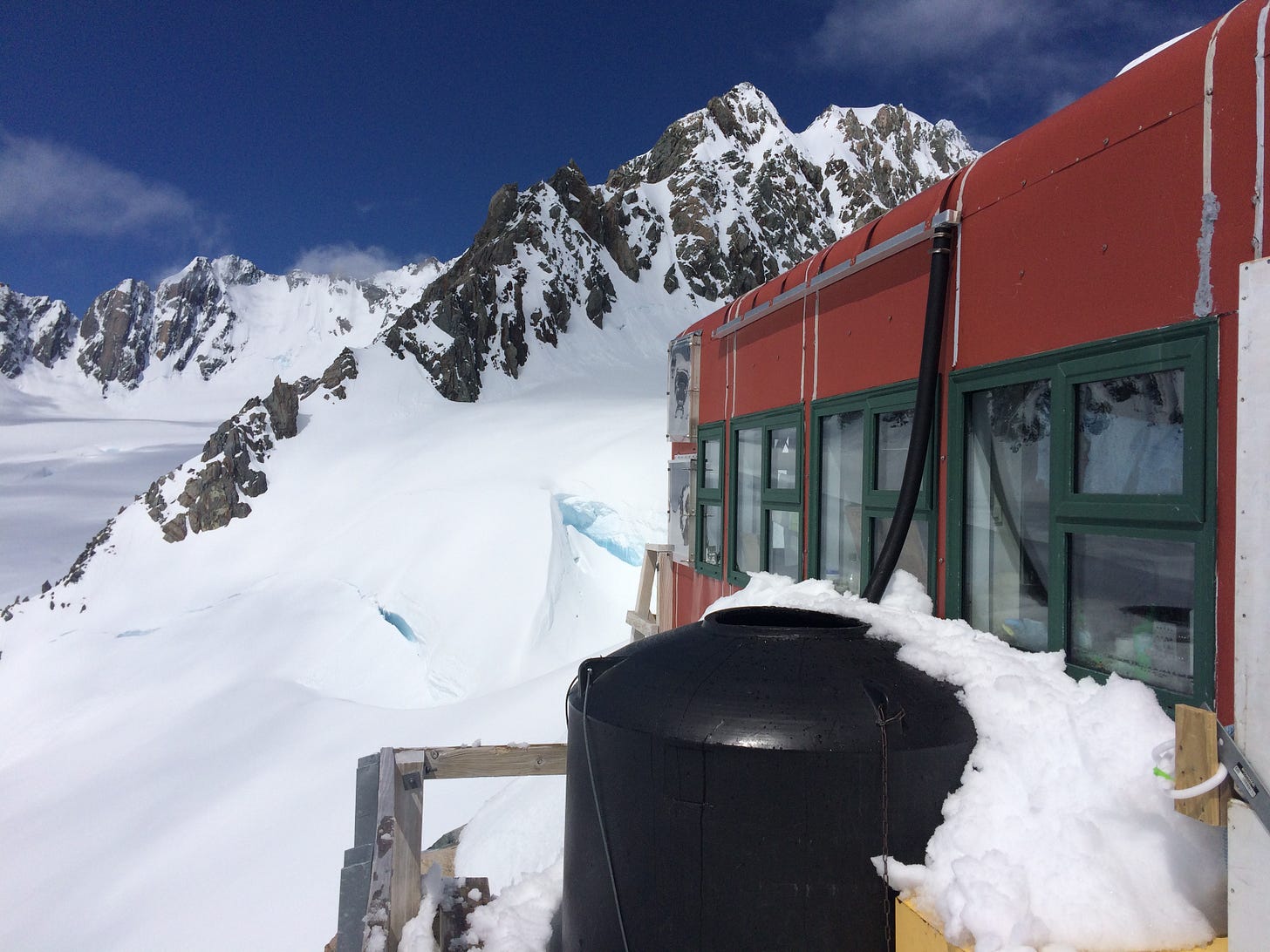On Covid, Keynes, shovel-ready projects, & fiscal stimulus🍋
Well-intentioned government stimulus can backfire
I’m recovering after being stuck at home sick this past week1. At least my home has an delightful view of Wellington Harbour. That view has, for the past year, featured an over-budget, over-time cycleway project.2 Construction started in October 2022, and, according to a sign still visible at its southern end, was to be completed by March 2023. It’s now November, and the cycleway is inching towards completion.

This project got me thinking about well-intentioned fiscal stimulus delivered via infrastructure projects. The cycleway is being funded, at least in part, by the NZ Government’s Covid Response & Recovery Fund (CRRF). The CRRF funded many activities and projects, but “shovel-ready” infrastructure projects stood out in my mind as a classic recession response that, in this instance, may well have backfired.
The theory
Government typically seek to do the right thing in a recession (at least right according to John Maynard Keynes). When there is a dip in economic activity, governments can fill that dip with increased public spending.3 Such government stimulus compensates for weak private demand.
Governments risk doing the exact opposite when they rush to announce infrastructure projects. These projects are invariably described as “shovel ready”, regardless of their actual status. But by the time the shovels are touching dirt and jobs have been filled, the economy may well be beyond the dip. Such fiscal stimulus risks being pro-cyclical, not anti-cyclical as intended.
As pro-cyclical spending occurs at a time when the economy is hot, there will be intense competition for staff experienced in construction, and for materials and equipment. This increases the likelihood of schedule blowouts and cost overruns, and tends to worsen the boom-bust conditions typically faced by the construction industry.
Theory meets Covid
Things turned out differently during the Covid pandemic. Economists (including me at the time) thought of the Covid-policy-induced economic slowdown as “normal” recession. But it wasn’t.
In a classic textbook recession, economic activity is constrained by weak demand. Government borrowing-and-spending can add extra demand, dealing directly to the problem.
It turned out that the Covid recession was better characterised as supply constrained. That is, demand remained strong but it could not be met by (heavily regulated) supply. Take away the supply constraints, and the economy might well roar.
This (revised) theory fits with the Covid recession being shorter than typical, and the post-recession recovery stronger. It also suggests that Covid-recession-inspired fiscal stimulus was perhaps more likely to be pro-cyclical.
Covid meets data
It’s been a few years since the Covid pandemic, long enough to have actual data. So I plotted up this graph.
As I can’t easily split out infrastructure, think of CRRF spending as total stimulus. Solid lines and bars are actuals, dashed ones are forecasts and allocations.4 Let’s ignore FY20, as it includes only a part-Covid year (March-June 2020). This was also the period with maximal lockdown and maximum uncertainty.
On the GDP figures, you’d want maximum spending in FY21, and minimum in FY22. But that’s not what happened. Spending peaked in FY22, in a year with 5.2% GDP growth! CRRF spending was definitely pro-cyclical.
And data meets policy
Presumably, economists will now add supply-constrained recessions to their list of things that might just happen. The optimum stimulus package for such events is likely very short and sharp, which is a poor fit with publicly funded infrastructure projects, shovel-ready or not.
… not to mention politics
Whenever the economy is doing poorly, politicians inevitably come under pressure to announce big projects that sound like they might help. So they will likely rush to back to the shovel-ready project trope (regardless of whether the underlying problem is supply or demand constraints).
Here are my quick ideas on what they might do instead:
provide funding to accelerate infrastructure projects already underway (e.g. renewals of aging underground pipes and pothole repairs);
prefer projects with real options to abandon, cut short, delay, accelerate, or draw out, should economic conditions change more rapidly (or slowly) than expected; and
stimulate demand directly through cash support to individuals and businesses.
By Dave Heatley

I didn’t had Covid, thankfully. Though I have to say it would have made this a neater story.
More precisely, it’s the Mā-koromiko segment of the Tupua Horo Nuku Eastern Bays walking and cycling shared path project. The cycleway is being built in multiple segments, of which Mā-koromiko is the most advanced. The whole project is receiving CRRF funding. Based on its current rate of progress, completion is likely to be 4 to 5 years away.
Keynesian economics applied correctly, to my mind, also requires governments to scale back on public spending when the economy is running well. Fiscal surpluses at those times are required to fund the fiscal deficits incurred in the dips. However, governments of all stripes seem to find the spend-and-borrow part of the prescription easier than the cutback-and-repay-debt part.
Data sources: Actual GDP, forecast GDP, and CRRF spending. Financial years are July to June.






Thanks David. The quality of projects also matter, of course. Shovel-ready projects are all well and good if the most important skill we want people to develop is how to handle a shovel. Or how to ride a bicycle (to go to your example). It is a long way from regional development based on ideas such as the EU's smart specialisation that looks to expand supply-side capabilities based on a local entrepreneurial discovery process.
Not sure about describing the supply issue as possibly heavily regulated.
Much of the supply issue was because of supply chain disruptions overseas outside the ambit of local regulation.
Such supply issue as was domestic in origin was because of necessary/essential public health measures - which necessitated what could be described as heavy regulation, but not in any negative sense.